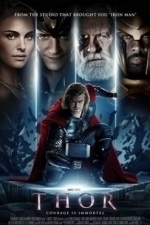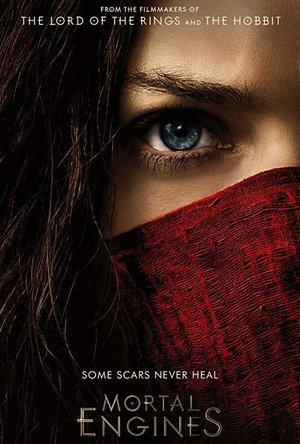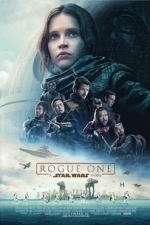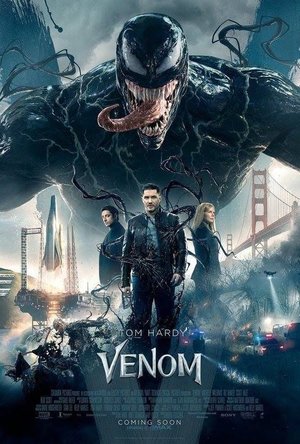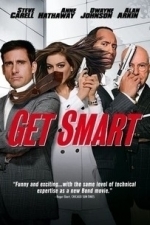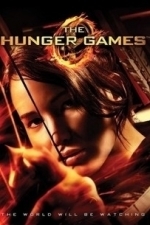Search
Gareth von Kallenbach (980 KP) rated Thor (2011) in Movies
Aug 7, 2019
The latest Marvel comic based film has arrived and continues a trend of top-notch cinematic adaptations of Marvel characters. THOR stars Chris Hemsworth as the brash and bold Asgard warrior who is next in line for the kingdoms throne. His father Odin (Anthony Hopkins), has ruled the kingdom for many years and as such has been responsible for maintaining the peace for Asgard and all the other known realms. After being surprised by an incursion by an ancient enemy previously defeated by Odin, the God of Thunder leads a group of warriors on a mission of retribution against his father’s orders which soon has the Asgard people facing the spectre of war.
Instead of his planned coronation, Thor finds himself cast out of Asgard and forced to live as a mortal on Earth. Truly a fish out of water, the brash and arrogant Thor is befriended by scientist Jane Watson (Natalie Portman), the first person Thor encounters upon his arrival. Unsure of his true identity, Jane and her colleagues are drawn to the mysterious stranger despite his tales which, to the humans, are the stuff of ancient Norse legends.
While initially dismissed as a drifter, Thor soon gains the respect of Jane and her colleagues when he stands up to a mysterious government organization that has seized her work. Thor soon finds himself battling enemies on multiple fronts on both his present and former home where he must battle to regain his lost honor and status and prove himself the rightful leader of his people. What follows is a highly entertaining mix of action, comedy, and a touch of romance that sets the film apart from many of its peers.
Director Kenneth Branagh fleshes out the characters from their two-dimensional origins and paces the film well never allowing the elaborate effects or action sequences of the film to overshadow the characters or the story. J. Michael Straczynski used many of the lessons he learned as the creator of the Babylon 5 and in his recent work with Marvel comics to provide a character-driven story that is true to the source material while providing interweaving storylines and ever-changing characters.
The supporting cast was strong, especially Tom Hiddleston as Thor’s younger sibling Loki. The visuals of the film match the action perfectly as Asgard and some of the other realms are truly breathtaking. The only issue I had with the film was that, sadly, Paramount felt the need to use a post filming 3-D conversion on the film which in my opinion offered very little to the finished product. Had the film been shot with 3-D cameras it truly would’ve taken it to the next level but as it was actually done, the 3D conversion offers little to the visual experience.
Hemsworth commands the screen in every scene in which he appears. He is a charismatic presence that deftly walks the line between brash warrior and leader seeking redemption, who never lets his performance become cartoony or forced. I absolutely loved every part the film from beginning to end and in my opinion Thor has set the bar very high for the next series of comic book themed movies to aspire to and is not to be missed.
Instead of his planned coronation, Thor finds himself cast out of Asgard and forced to live as a mortal on Earth. Truly a fish out of water, the brash and arrogant Thor is befriended by scientist Jane Watson (Natalie Portman), the first person Thor encounters upon his arrival. Unsure of his true identity, Jane and her colleagues are drawn to the mysterious stranger despite his tales which, to the humans, are the stuff of ancient Norse legends.
While initially dismissed as a drifter, Thor soon gains the respect of Jane and her colleagues when he stands up to a mysterious government organization that has seized her work. Thor soon finds himself battling enemies on multiple fronts on both his present and former home where he must battle to regain his lost honor and status and prove himself the rightful leader of his people. What follows is a highly entertaining mix of action, comedy, and a touch of romance that sets the film apart from many of its peers.
Director Kenneth Branagh fleshes out the characters from their two-dimensional origins and paces the film well never allowing the elaborate effects or action sequences of the film to overshadow the characters or the story. J. Michael Straczynski used many of the lessons he learned as the creator of the Babylon 5 and in his recent work with Marvel comics to provide a character-driven story that is true to the source material while providing interweaving storylines and ever-changing characters.
The supporting cast was strong, especially Tom Hiddleston as Thor’s younger sibling Loki. The visuals of the film match the action perfectly as Asgard and some of the other realms are truly breathtaking. The only issue I had with the film was that, sadly, Paramount felt the need to use a post filming 3-D conversion on the film which in my opinion offered very little to the finished product. Had the film been shot with 3-D cameras it truly would’ve taken it to the next level but as it was actually done, the 3D conversion offers little to the visual experience.
Hemsworth commands the screen in every scene in which he appears. He is a charismatic presence that deftly walks the line between brash warrior and leader seeking redemption, who never lets his performance become cartoony or forced. I absolutely loved every part the film from beginning to end and in my opinion Thor has set the bar very high for the next series of comic book themed movies to aspire to and is not to be missed.

Tapatalk - 200,000+ Forums
Social Networking and News
App
Tapatalk connects to over 100,000 online forums worldwide. Post easily with unlimited Photo and...
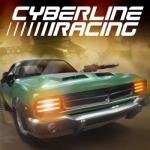
Cyberline Racing
Games and Entertainment
App
Cyberline Racing is the triumph of the death racing genre! This game combines action packed shooting...
Bob Mann (459 KP) rated Red Sparrow (2018) in Movies
Sep 29, 2021
Good Lord! How much sex and violence is acceptable for a UK-15 film?
I recognise that it’s a “thing” that I get into periodic ‘ruts’ of ranting about particular aspects of cinema. But it’s not spoilers in trailers this time! No, the most recent rut I’ve been in is concerned with the correctness or otherwise of the BBFC’s rating of UK 15-certificate films, which seems to have been the rating of every cinema film I’ve seen recently! In my view both “Phantom Thread” and “Lady Bird” should both have firmly been 12A’s to attract a broader teenage audience. But here’s a case on the other side of the balance.
“Red Sparrow”, the latest film from “Hunger Games” director Francis Lawrence, has Jennifer Lawrence (“Joy“, “mother!“) as Dominika Egorova, a Russian ballerina, who after a horrific accident (cringe) is forced to serve the State in order to keep her mother (Joely Richardson, “101 Dalmations”) in their Bolshoi-funded apartment and with the necessary medical treatment. She is sent to a spy “whore school”, ruled over by “matron” (Charlotte Rampling), to learn how to use sexual and psychological means to ‘get in the pants’ (and therefore the minds) of foreign targets.
Always elegant. Charlotte Rampling back on our screens as “Matron”.
And she turns out to be very good and – without nepotism of course, given that her creepy uncle Egorov ( Matthias Schoenaerts, “Far From The Madding Crowd“) is high up in the special services – she is sent on a mission to Budapest to try to uncover a high profile mole, who’s CIA handler is Nate Nash (Joel Edgerton, “The Great Gatsby“, “Black Mass“). Supervising Egorov’s operation are his two line managers General Korchnoi (Jeremy Irons, “Batman v Superman: Dawn of Justice“) and Zakharov (Ciarán Hinds, “Harry Potter”). Sucked into a web of intrigue, Dominika needs to use all her skills and charms to complete her mission… which equates to keeping herself and her mother alive.
Now on the tarmac, Joel really wans’t looking forward to his Ryanair flight.
This is an extremely uneven film. In places it is quite brilliant, particularly the twist in the ending which leaves you thinking (like “Life“) that the film is actually better than it was. In fact – subject to a couple of severe reservations discussed below – the script by Justin Haythe (“A Cure for Wellness“) and based on a book by Jason Matthews, is quite sharp. But – man – in its direction the film seriously takes its time. In my book, a film needs to have a pretty good reason to extend its stay past 2 hours, and this outstays its welcome by an extra 20 minutes. Many of the scenes are protracted – leisurely walks across streets etc. – for no particularly good reason.
Pwoaahh – look at those. (I’m referring of course to Joel Edgerton’s buns in those speedos).
And so to those major reservations: the sex and the violence.
I’m no prude when it comes to sex, but some of the scenes in the ‘whore school’ left me feeling like this was less about a “Times Up” initiative of empowering women and more about providing an array of sordid titillation on the screen that just help entrench mysoginistic views about women. (Did anyone else hear Kenneth Williams saying “Oooooh, matron” to Charlotte Rampling’s character?) There were men and women attending this training camp, but did we see – later in the film – any of the men subjecting themselves to sexual humiliation or subjugation in the field: no, we did not. I love a really good erotic film… but this just left me feeling dirty and used.
Who wants to go to the f***ing party? No one seems to have remembered to bring a bottle.
And then there’s the violence. I’m definitely not a fan of the sort of violent-porn of the “Saw” type of films, but heavens – if there was a reason to make this an 18 certificate it was the violence involved. Violent rape, a vicious revenge attack, extreme torture, skinning alive: was there nothing in here that the censors thought, “hang on a minute, perhaps I don’t want a 15 year old seeing this”. I have seldom seen and heard more flinching and whimpering from women in a cinema audience than during this film. If you are adversely affected by screen violence, this is really one best to avoid.
“The Cold War hasn’t ended – it has splintered into thousands of dangerous pieces” intones the matron. Similarly, this film has potential but splinters into many pieces, some good but far more sharp and dangerous. With similarities in tone and content to “Atomic Blonde“, there’s a good ‘post cold war’ spy film in here trying to get out. Unfortunately, it never quite gets both legs over the wall.
“Red Sparrow”, the latest film from “Hunger Games” director Francis Lawrence, has Jennifer Lawrence (“Joy“, “mother!“) as Dominika Egorova, a Russian ballerina, who after a horrific accident (cringe) is forced to serve the State in order to keep her mother (Joely Richardson, “101 Dalmations”) in their Bolshoi-funded apartment and with the necessary medical treatment. She is sent to a spy “whore school”, ruled over by “matron” (Charlotte Rampling), to learn how to use sexual and psychological means to ‘get in the pants’ (and therefore the minds) of foreign targets.
Always elegant. Charlotte Rampling back on our screens as “Matron”.
And she turns out to be very good and – without nepotism of course, given that her creepy uncle Egorov ( Matthias Schoenaerts, “Far From The Madding Crowd“) is high up in the special services – she is sent on a mission to Budapest to try to uncover a high profile mole, who’s CIA handler is Nate Nash (Joel Edgerton, “The Great Gatsby“, “Black Mass“). Supervising Egorov’s operation are his two line managers General Korchnoi (Jeremy Irons, “Batman v Superman: Dawn of Justice“) and Zakharov (Ciarán Hinds, “Harry Potter”). Sucked into a web of intrigue, Dominika needs to use all her skills and charms to complete her mission… which equates to keeping herself and her mother alive.
Now on the tarmac, Joel really wans’t looking forward to his Ryanair flight.
This is an extremely uneven film. In places it is quite brilliant, particularly the twist in the ending which leaves you thinking (like “Life“) that the film is actually better than it was. In fact – subject to a couple of severe reservations discussed below – the script by Justin Haythe (“A Cure for Wellness“) and based on a book by Jason Matthews, is quite sharp. But – man – in its direction the film seriously takes its time. In my book, a film needs to have a pretty good reason to extend its stay past 2 hours, and this outstays its welcome by an extra 20 minutes. Many of the scenes are protracted – leisurely walks across streets etc. – for no particularly good reason.
Pwoaahh – look at those. (I’m referring of course to Joel Edgerton’s buns in those speedos).
And so to those major reservations: the sex and the violence.
I’m no prude when it comes to sex, but some of the scenes in the ‘whore school’ left me feeling like this was less about a “Times Up” initiative of empowering women and more about providing an array of sordid titillation on the screen that just help entrench mysoginistic views about women. (Did anyone else hear Kenneth Williams saying “Oooooh, matron” to Charlotte Rampling’s character?) There were men and women attending this training camp, but did we see – later in the film – any of the men subjecting themselves to sexual humiliation or subjugation in the field: no, we did not. I love a really good erotic film… but this just left me feeling dirty and used.
Who wants to go to the f***ing party? No one seems to have remembered to bring a bottle.
And then there’s the violence. I’m definitely not a fan of the sort of violent-porn of the “Saw” type of films, but heavens – if there was a reason to make this an 18 certificate it was the violence involved. Violent rape, a vicious revenge attack, extreme torture, skinning alive: was there nothing in here that the censors thought, “hang on a minute, perhaps I don’t want a 15 year old seeing this”. I have seldom seen and heard more flinching and whimpering from women in a cinema audience than during this film. If you are adversely affected by screen violence, this is really one best to avoid.
“The Cold War hasn’t ended – it has splintered into thousands of dangerous pieces” intones the matron. Similarly, this film has potential but splinters into many pieces, some good but far more sharp and dangerous. With similarities in tone and content to “Atomic Blonde“, there’s a good ‘post cold war’ spy film in here trying to get out. Unfortunately, it never quite gets both legs over the wall.
Gareth von Kallenbach (980 KP) rated Mortal Engines (2018) in Movies
Jul 2, 2019
Take a moment and imagine a world where most of humanity has been wiped off the map and those that remain are forced to survive on the remaining resources of a civilization that has been torn apart. In this new existence, leftover technology is coveted like diamonds and massive predator cities prey on weaker smaller cities to steal whatever meager resources they still possess. This is the world of Mortal Engines, the latest Peter Jackson blockbuster based on the young adult novel of the same name by Philip Reeves.
Mortal Engines takes place roughly a thousand years after the conclusion of the Sixty Minute War that decimated the earth and now civilization has banded into two very distinct groups. There are those in the “Traction Cities”, which are behemoth mobile cities that scour what remains of Europe gobbling up smaller cities to convert them and their resources into fuel that keeps the larger cities moving. Then there is the Anti-Traction League, a group that believes in preserving what little resources remain and living in “Traction-less” cities…a.k.a. cities built on land. London is the main Traction City and it is led by Thaddeus Valentine (Hugo Weaving) and his desire to tear down a great wall that is the only barrier between London and the surplus of resources that he so desperately needs.
After London devours one of the smaller cities, we are introduced to Hester Shaw (Hera Hilmar), whose one goal in life is to kill Thaddeus Valentine, the man who murdered her mother. After her failed assassination attempt on his life, she teams up with historian Tom Natsworthy (Robert Sheehan) to not only survive, but also to prevent Valentine’s plan to recreate the war that took down humanity in the first place. This is a big job for the unlikely duo and on top of everything else, Hester is being hunted by a zombie/terminator hybrid named Shrike who wants nothing more than to kill her.
If it sounds like a lot to follow over the course of the two hours and nine-minute run time, you’d be right. In fact, without a lot of backstory which those who have read the novels will really benefit from, it can be a bit too much to take in. It comes across as a combination of Mad Max and the video game Dishonored, but it is lacking an excellent story to back up all of the post-apocalyptic action. That’s not to say that the story is bad, but it is by far the weakest part of the film and a huge missed opportunity to elevate a pretty good movie to the classic Peter Jackson masterpiece status we usually get from him. Considering the genius of Mr. Jackson this movie could have been so much more.
But now on to the good stuff…
Visually speaking Mortal Engines is a true work of art. Taking the steampunk Victorian era backdrop and adding in large mobile cities crashing through trees and forests gives us visuals that are not only magnificent, but also awe inspiring. I was lucky enough to see Mortal Engines in IMAX and the larger screen only helped to emphasize how truly awesome these large rolling cities are. This is a movie that is meant to be seen on the big screen, and with Mortal Engines, the bigger the better. The sound design matches the visuals in its epic scale, as it is loud and menacing. You can actually feel the rumble of the large treads as they move across the earth, and the crunching of smaller cities as the massive cities devour all that crosses their path. The casting and the acting were another positive as the good characters were ones you wanted to root for and the bad characters you hope would get what’s coming to them. All in all, there is quite a bit to like in this film and if nothing else you are sure to have a good time taking in all of the scenery.
In summary, Mortal Engines is a movie that feels as though it had so much potential but couldn’t quite live up to it. It definitely feels more like a summer blockbuster, full of explosions and action, instead of the deeper holiday releases that we usually get around this time. It’s the kind of movie that you go to see for the sheer spectacle of it all as long as you are willing to overlook any plot or story depth. Unfortunately, this leaves the quandary of whether or not it’s worth the full price of admission (or even more if you are planning to see it in IMAX) and my answer to that is…it depends. If you have any interest in seeing it at all then Mortal Engines is definitely a movie you should see on the big screen. On the other hand, it might be worth it to just wait to see it on pay-per-view or Blu-ray even though it may lose a lot of what makes the movie so much fun in the first place. While the movie could have been better, I have definitely seen worse and if the idea of massive rolling cities and steampunk set pieces are your thing, then Mortal Engines is certainly worth a look.
Mortal Engines takes place roughly a thousand years after the conclusion of the Sixty Minute War that decimated the earth and now civilization has banded into two very distinct groups. There are those in the “Traction Cities”, which are behemoth mobile cities that scour what remains of Europe gobbling up smaller cities to convert them and their resources into fuel that keeps the larger cities moving. Then there is the Anti-Traction League, a group that believes in preserving what little resources remain and living in “Traction-less” cities…a.k.a. cities built on land. London is the main Traction City and it is led by Thaddeus Valentine (Hugo Weaving) and his desire to tear down a great wall that is the only barrier between London and the surplus of resources that he so desperately needs.
After London devours one of the smaller cities, we are introduced to Hester Shaw (Hera Hilmar), whose one goal in life is to kill Thaddeus Valentine, the man who murdered her mother. After her failed assassination attempt on his life, she teams up with historian Tom Natsworthy (Robert Sheehan) to not only survive, but also to prevent Valentine’s plan to recreate the war that took down humanity in the first place. This is a big job for the unlikely duo and on top of everything else, Hester is being hunted by a zombie/terminator hybrid named Shrike who wants nothing more than to kill her.
If it sounds like a lot to follow over the course of the two hours and nine-minute run time, you’d be right. In fact, without a lot of backstory which those who have read the novels will really benefit from, it can be a bit too much to take in. It comes across as a combination of Mad Max and the video game Dishonored, but it is lacking an excellent story to back up all of the post-apocalyptic action. That’s not to say that the story is bad, but it is by far the weakest part of the film and a huge missed opportunity to elevate a pretty good movie to the classic Peter Jackson masterpiece status we usually get from him. Considering the genius of Mr. Jackson this movie could have been so much more.
But now on to the good stuff…
Visually speaking Mortal Engines is a true work of art. Taking the steampunk Victorian era backdrop and adding in large mobile cities crashing through trees and forests gives us visuals that are not only magnificent, but also awe inspiring. I was lucky enough to see Mortal Engines in IMAX and the larger screen only helped to emphasize how truly awesome these large rolling cities are. This is a movie that is meant to be seen on the big screen, and with Mortal Engines, the bigger the better. The sound design matches the visuals in its epic scale, as it is loud and menacing. You can actually feel the rumble of the large treads as they move across the earth, and the crunching of smaller cities as the massive cities devour all that crosses their path. The casting and the acting were another positive as the good characters were ones you wanted to root for and the bad characters you hope would get what’s coming to them. All in all, there is quite a bit to like in this film and if nothing else you are sure to have a good time taking in all of the scenery.
In summary, Mortal Engines is a movie that feels as though it had so much potential but couldn’t quite live up to it. It definitely feels more like a summer blockbuster, full of explosions and action, instead of the deeper holiday releases that we usually get around this time. It’s the kind of movie that you go to see for the sheer spectacle of it all as long as you are willing to overlook any plot or story depth. Unfortunately, this leaves the quandary of whether or not it’s worth the full price of admission (or even more if you are planning to see it in IMAX) and my answer to that is…it depends. If you have any interest in seeing it at all then Mortal Engines is definitely a movie you should see on the big screen. On the other hand, it might be worth it to just wait to see it on pay-per-view or Blu-ray even though it may lose a lot of what makes the movie so much fun in the first place. While the movie could have been better, I have definitely seen worse and if the idea of massive rolling cities and steampunk set pieces are your thing, then Mortal Engines is certainly worth a look.
RəX Regent (349 KP) rated Rogue One: A Star Wars Story (2016) in Movies
Feb 20, 2019
This is not the first Star Wars spin-off, but it is joining a legacy of sub par entries to the franchise, certainly as where the big screen has been concerned, with two Ewoks movies and The Clone Wars TV pilot come movie to contend with. But Rogue One is first to take on the mantle of a blockbuster and attempt to compete with the very best of the Saga, if not join them.
In many ways, Rogue One is the prequel that we have been waiting for, taking place directly before the original movie, A New Hope, Gareth Edwards of Monsters (2010) and Godzilla fame, has managed to create a fan boy's dream following the events which are mentioned in the opening crawl for that classic movie, the theft of the Death Star plans which would ultimately lead to Luke Skywalker's "shot in a million" to destroy the moon sized planet killer.
But here, the task was to both take Star Wars in new new direction as well as to flesh out the story of the Star Wars saga itself. They manage to pull this off with the only real complaint being the pacing which is sporadic at best. With a combination of contrived plotting and uneven pacing, the starker, war movie which this is, can feel at times, like a check list of everything that fans have wanted to see on the big screen since 1983 and as such, runs the risk of being a vacuous, through-away movie, the "greatest hits" as it were.
But I feel that it skirts this issue and manages to stay on the side of narrative integrity, just about. We finally see Darth Vader, post Episode III for the first time in a life action film since 2005, something which the prequels failed to deliver and whilst at first it seemed to be a crowd pleasing cameo, by the finale, it paid off perfectly, as did the resurrection of the late Peter Cushing's Grand Moff Tarkin, with the aid of ground breaking, if not morally questionable CGI effects. This was also used to bring us a cameo from Princess Laia (1977) to great effect.
Also, integrating stock footage of the original Red and Gold Squadron pilots from Star Wars (1977) and the demise of the original Red 5, who's place Luke Skywalker would assume, were all nice touches.
In the end, at best Rogue One serves to turn the original Star Wars movie into and two part epic, with this movie seamlessly leading into the opening of Star Wars but how does it hold up in its own right?
Well, it is entertaining, well acted, if not let down by Gareth Edwards' slightly uneven direction, but how the notorious re-shoots, which have clearly left several key shots form the trailers on the cutting room floor and possibly changes the finale significantly, effected this is as yet unknown, and Michael Giacchino's slightly over the top bombastic score, Rogue One will certainly be an entertaining and action packed entry into the Star Wars universe.
But the true success of this film lies with its expansion of the Saga as a whole, bridging the less popular prequels with the original trilogy for the first time on the big screen, taking on finally, what J.J. Abrams' The Force Awakens (2015) deliberately chose not too. Hopefully Episode VIII (2017) follow in the same vein, finally repairing some of the issues which Lucas' much derided prequels, which at their heart, may have had much more to offer than Lucas' poor direction let us see the first time around.
In many ways, Rogue One is the prequel that we have been waiting for, taking place directly before the original movie, A New Hope, Gareth Edwards of Monsters (2010) and Godzilla fame, has managed to create a fan boy's dream following the events which are mentioned in the opening crawl for that classic movie, the theft of the Death Star plans which would ultimately lead to Luke Skywalker's "shot in a million" to destroy the moon sized planet killer.
But here, the task was to both take Star Wars in new new direction as well as to flesh out the story of the Star Wars saga itself. They manage to pull this off with the only real complaint being the pacing which is sporadic at best. With a combination of contrived plotting and uneven pacing, the starker, war movie which this is, can feel at times, like a check list of everything that fans have wanted to see on the big screen since 1983 and as such, runs the risk of being a vacuous, through-away movie, the "greatest hits" as it were.
But I feel that it skirts this issue and manages to stay on the side of narrative integrity, just about. We finally see Darth Vader, post Episode III for the first time in a life action film since 2005, something which the prequels failed to deliver and whilst at first it seemed to be a crowd pleasing cameo, by the finale, it paid off perfectly, as did the resurrection of the late Peter Cushing's Grand Moff Tarkin, with the aid of ground breaking, if not morally questionable CGI effects. This was also used to bring us a cameo from Princess Laia (1977) to great effect.
Also, integrating stock footage of the original Red and Gold Squadron pilots from Star Wars (1977) and the demise of the original Red 5, who's place Luke Skywalker would assume, were all nice touches.
In the end, at best Rogue One serves to turn the original Star Wars movie into and two part epic, with this movie seamlessly leading into the opening of Star Wars but how does it hold up in its own right?
Well, it is entertaining, well acted, if not let down by Gareth Edwards' slightly uneven direction, but how the notorious re-shoots, which have clearly left several key shots form the trailers on the cutting room floor and possibly changes the finale significantly, effected this is as yet unknown, and Michael Giacchino's slightly over the top bombastic score, Rogue One will certainly be an entertaining and action packed entry into the Star Wars universe.
But the true success of this film lies with its expansion of the Saga as a whole, bridging the less popular prequels with the original trilogy for the first time on the big screen, taking on finally, what J.J. Abrams' The Force Awakens (2015) deliberately chose not too. Hopefully Episode VIII (2017) follow in the same vein, finally repairing some of the issues which Lucas' much derided prequels, which at their heart, may have had much more to offer than Lucas' poor direction let us see the first time around.
Daniel Boyd (1066 KP) rated Venom (2018) in Movies
Oct 4, 2018 (Updated Oct 4, 2018)
Unexpectedly fun and comical (1 more)
Tom Hardy
This Is The Movie That Everyone Hates?
Contains spoilers, click to show
I have to be honest, I was not on-board with this film going in at all. I wasn't interested in a Spiderman-less Spiderman universe and the trailers didn't exactly sell me on it either. It looked like they were messing with the origin of Venom too much and the action set pieces didn't look too impressive. Then there was the fact that the review embargo was only lifted a day before the movie's release, then there were the terrible reviews. Suffice to say I went into this with a morbid curiosity expecting a total mess.
However, I am happy to report that this movie actually really pleasantly surprised me and I had a ton of fun watching Venom.
When I heard that Tom Hardy was playing Eddie Brock, I was really gutted because I think that he would have been the perfect choice for the MCU's Wolverine. I also thought that this was going to be a mistake in terms of Hardy's career; out of all of the superhero movies he could have been a part of, he chose Venom? I was happy to be proven wrong, Hardy was great in both his role as Eddie Brock and as Venom. He was funny, scary and heartfelt at all the right moments and looked like he was having a good time playing the character.
This movie did remind me a lot of Upgrade, which was also a Sci-fi movie released this year with a protagonist who gains a voice in his head and extraordinary powers that he doesn't have any control over. Coincidentally Tom Hardy also looks strikingly similar to the actor in Upgrade, Logan-Marshall Green. If I had to compare the two movies, I personally preferred Upgrade, but I had a lot of fun with both of them.
And that's the best thing about this movie, it is fun. Sure, it's not a comic book accurate Venom origin and it's not connected to the MCU's Spiderman and it's not up to snuff compared to the recent entries in the MCU, but it is a ton of fun to watch this violent alien join forces with a witty, down on his luck reporter and wreak havoc.
I'm going to drop a few spoilers going forward, so if you have yet to see the movie, you should probably click away now.
The thing that was really bothering me during the opening of the movie was; why is this story taking place in San Francisco? Eddie Brock is a New Yorker, not a San Franciscan. Then they addressed that issue and explained that he had moved away from New York. It was only a brief, throwaway line, but they didn't have to bother including it and I appreciate that they did.
I also really enjoyed the brief appearance of She-Venom. Sure, the odds that this Symbiote that rejects almost every human host that it comes into contact with, just happens to bond perfectly with this couple, is a bit of a stretch. However, this is a comic book movie with aliens, so I'm willing to accept a few stretches in the movie's logic.
Lastly I like the fact that they teased Carnage in the post credits tease and I am glad that they got Woody Harrelson to play him, he is one of my favourite actors... but my God he looked really dumb in that red wig, like almost parody bad.
Overall, although I had extremely low expectations going into Venom, it exceeded them by a great deal. Sure, it's not Infinity War and it's not even Spiderman: Homecoming, but it is a lot of fun and there is definitely a good amount of enjoyment to be had in Venom.
However, I am happy to report that this movie actually really pleasantly surprised me and I had a ton of fun watching Venom.
When I heard that Tom Hardy was playing Eddie Brock, I was really gutted because I think that he would have been the perfect choice for the MCU's Wolverine. I also thought that this was going to be a mistake in terms of Hardy's career; out of all of the superhero movies he could have been a part of, he chose Venom? I was happy to be proven wrong, Hardy was great in both his role as Eddie Brock and as Venom. He was funny, scary and heartfelt at all the right moments and looked like he was having a good time playing the character.
This movie did remind me a lot of Upgrade, which was also a Sci-fi movie released this year with a protagonist who gains a voice in his head and extraordinary powers that he doesn't have any control over. Coincidentally Tom Hardy also looks strikingly similar to the actor in Upgrade, Logan-Marshall Green. If I had to compare the two movies, I personally preferred Upgrade, but I had a lot of fun with both of them.
And that's the best thing about this movie, it is fun. Sure, it's not a comic book accurate Venom origin and it's not connected to the MCU's Spiderman and it's not up to snuff compared to the recent entries in the MCU, but it is a ton of fun to watch this violent alien join forces with a witty, down on his luck reporter and wreak havoc.
I'm going to drop a few spoilers going forward, so if you have yet to see the movie, you should probably click away now.
The thing that was really bothering me during the opening of the movie was; why is this story taking place in San Francisco? Eddie Brock is a New Yorker, not a San Franciscan. Then they addressed that issue and explained that he had moved away from New York. It was only a brief, throwaway line, but they didn't have to bother including it and I appreciate that they did.
I also really enjoyed the brief appearance of She-Venom. Sure, the odds that this Symbiote that rejects almost every human host that it comes into contact with, just happens to bond perfectly with this couple, is a bit of a stretch. However, this is a comic book movie with aliens, so I'm willing to accept a few stretches in the movie's logic.
Lastly I like the fact that they teased Carnage in the post credits tease and I am glad that they got Woody Harrelson to play him, he is one of my favourite actors... but my God he looked really dumb in that red wig, like almost parody bad.
Overall, although I had extremely low expectations going into Venom, it exceeded them by a great deal. Sure, it's not Infinity War and it's not even Spiderman: Homecoming, but it is a lot of fun and there is definitely a good amount of enjoyment to be had in Venom.
Gareth von Kallenbach (980 KP) rated Get Smart (2008) in Movies
Aug 14, 2019
In the post Cold-War era the focus on national security has changed from focusing on Eastern Block adversaries to terror cells and state sponsored terrorism. For the agents of the ultra secret agency Control, the demise of their arch nemesis KAOS was the signal that they had ceased to be important in the world of today and had shut down when in truth they just went further into a cloak of secrecy and continued their mission.
In the new movie “Get Smart” audiences are given a new interpretation of the classic Mel Brooks/Buck Henry series that started Don Adams and Barbra Feldon as a pair of secret agents tasked with saving the world.
This time out Steve Carell and Anne Hathaway star Maxwell Smart and Agent 99 as they are forced to work with one another following a devastating attack on Control headquarters which results in the exposure of their operatives worldwide.
With no agents having the required anonymity needed to perform covert missions, the Chief of Control (Alan Arkin), is forced to promote eager intelligence analyst Smart to the ranks of field agent and pairs him with Agent 99 who is still able to maintain her guise thanks to some prep work she had done for a prior assignment.
To say that 99 is not thrilled to be paired with Smart would be an understatement, as she sees the eager Smart to be an unproven liability and one that would likely cause the failure of the mission and kill both of them.
Since the ultra suave Agent 23 (Dwayne Johnson), is unable to work in the field, Smart and Agent 99 are forced to work with one another as they head off to Russia to get to the bottom of the weapons threat and hopefully follow the trail to the ultimate threat, Siegfried (Terrance Stamp), who is the brains behind an all new wave of terror that only Agent 99 and Smart can stop.
The film starts out slowly, but eventually finds its rhythm and does a decent job of blending comedy and action. Hathaway and Carell do a great job with the material as both roles require a degree of physicality that they have not shown in previous works.
The laughs on the film are constant, but they are off the more dumb humor comedy as nobody will mistake this film as a piece of high comedy. Which is not to say this is a bad thing as Carell is very likeable as Smart and while he portrays the character differently than did the late Don Adams; he maintains the goofy competence that his character requires as despite being a goofball, he does get the job done in the end.
The fine supporting work by Arkin and Johnson as well as a good amount of cameos lead to the fun of the film.
It is important to note that this is not a retelling of the original series that ran from 1965-1970 but a completely new interpretation of the series which has been updated to reflect the modern setting yet contains plenty of winks to the show that inspired it.
While many of the series catch phrases seem out of place in the film, I found myself enjoying the new film despite being a fan of the original series.
Some have leveled criticism that the film has traded locker room humor, stupid comedy, and FX for the wit and inventiveness that made the original series so popular.
I found myself enjoying the new version of the film and enjoyed the performances of the characters and while not side splittingly funny, there were more than enough chuckles along the way to keep me entertained.
Here is hoping 86 and 99 will be back on the big screen for future missions.
In the new movie “Get Smart” audiences are given a new interpretation of the classic Mel Brooks/Buck Henry series that started Don Adams and Barbra Feldon as a pair of secret agents tasked with saving the world.
This time out Steve Carell and Anne Hathaway star Maxwell Smart and Agent 99 as they are forced to work with one another following a devastating attack on Control headquarters which results in the exposure of their operatives worldwide.
With no agents having the required anonymity needed to perform covert missions, the Chief of Control (Alan Arkin), is forced to promote eager intelligence analyst Smart to the ranks of field agent and pairs him with Agent 99 who is still able to maintain her guise thanks to some prep work she had done for a prior assignment.
To say that 99 is not thrilled to be paired with Smart would be an understatement, as she sees the eager Smart to be an unproven liability and one that would likely cause the failure of the mission and kill both of them.
Since the ultra suave Agent 23 (Dwayne Johnson), is unable to work in the field, Smart and Agent 99 are forced to work with one another as they head off to Russia to get to the bottom of the weapons threat and hopefully follow the trail to the ultimate threat, Siegfried (Terrance Stamp), who is the brains behind an all new wave of terror that only Agent 99 and Smart can stop.
The film starts out slowly, but eventually finds its rhythm and does a decent job of blending comedy and action. Hathaway and Carell do a great job with the material as both roles require a degree of physicality that they have not shown in previous works.
The laughs on the film are constant, but they are off the more dumb humor comedy as nobody will mistake this film as a piece of high comedy. Which is not to say this is a bad thing as Carell is very likeable as Smart and while he portrays the character differently than did the late Don Adams; he maintains the goofy competence that his character requires as despite being a goofball, he does get the job done in the end.
The fine supporting work by Arkin and Johnson as well as a good amount of cameos lead to the fun of the film.
It is important to note that this is not a retelling of the original series that ran from 1965-1970 but a completely new interpretation of the series which has been updated to reflect the modern setting yet contains plenty of winks to the show that inspired it.
While many of the series catch phrases seem out of place in the film, I found myself enjoying the new film despite being a fan of the original series.
Some have leveled criticism that the film has traded locker room humor, stupid comedy, and FX for the wit and inventiveness that made the original series so popular.
I found myself enjoying the new version of the film and enjoyed the performances of the characters and while not side splittingly funny, there were more than enough chuckles along the way to keep me entertained.
Here is hoping 86 and 99 will be back on the big screen for future missions.
Gareth von Kallenbach (980 KP) rated The Hunger Games (2012) in Movies
Aug 7, 2019
“The Hunger Games” is based in a post-apocalyptic time when the world has been overcome by a series of devastating natural disasters and people have turned on each other to provide supplies for their families and for themselves in order to survive.
Bringing peace to the land was a nation known as Panem which is ruled by the Capitol. Panem had once consisted of thirteen districts all providing a resource essential to the survival of its people. An uprising against the Capitol caused much anger and destruction resulting in war and the annihilation of its thirteenth district.
With the intent to make sure such an uprising would never happen again, the Capitol required each of the twelve remaining districts to abide by the rules and regulations written in the Treaty of Treason to make sure that there is peace within Panem. Once a year a lottery is held where each of the twelve districts must offer up one young man and one young woman as tributes. This must be done in order to remind the people of Panem what was lost. Each of the 24 tributes must train and then battle for survival in an outdoor arena against each other leaving only one tribute to become the victor. This is known as The Hunger Games.
“The Hunger Games” is based upon the New York times best seller written by Suzanne Collins and directed by Gary Ross who also directed Seabiscuit. The storyline follows the main character Katniss Everdeen (Jennifer Lawrence) who volunteers as tribute in order to save her younger sister from having to fight and Peeta Mellark (Josh Hutcheson) has also been randomly chosen as tribute for the twelfth district.
The movie mostly follows these two characters on their journey to the battle ground as opposed to the book where we get a little more background into each of the different districts and their tributes. Who will be the victor of the 74th annual Hunger Games?
Let me start off by stating that you do not need to have read the book in order to enjoy this film. However, the movie does follow the book very well. Fans will always have their own very strong opinions as to whether the films follow their favorite books but for someone who read the book after I watched the movie I must say I was not lost nor did I feel disappointed that I did not read it prior to screening it.
This film includes a great cast such as Stanley Tucci, Wes Bentley, Liam Hemsworth, Elizabeth Banks, Donald Sutherland and a surprisingly effectively-cast Lenny Kravitz. Along with a fitting cast the film also offers a great soundtrack, colors that fit each district and great cinematography.
It is always interesting to hear the comments of the other reviewers after the end of a movie screening. Some commented on how they pictured certain characters as a totally different type of character than what was portrayed in the book such as Cinna played by Lenny Kravitz.
One lady pictured him as a slim Asian man while my guest pictured him as a flamboyant white man with a high fashion sense. Others commented on how shaky the cinematography was. Yes, granted it does get shaky in a lot of the scenes but it only adds action to the heart pounding edge of your seat scenes. This film is a kickstart to the season of great movies to come and I predict “The Hunger Games” will reach a bigger audience as it provides elements of action, drama and sci-fi to satisfy a larger audience.
For those of you who have not read the book I do have to warn you some of the scenes and or elements of the story may be just a little too disturbing for some but is a great story nonetheless.
Bringing peace to the land was a nation known as Panem which is ruled by the Capitol. Panem had once consisted of thirteen districts all providing a resource essential to the survival of its people. An uprising against the Capitol caused much anger and destruction resulting in war and the annihilation of its thirteenth district.
With the intent to make sure such an uprising would never happen again, the Capitol required each of the twelve remaining districts to abide by the rules and regulations written in the Treaty of Treason to make sure that there is peace within Panem. Once a year a lottery is held where each of the twelve districts must offer up one young man and one young woman as tributes. This must be done in order to remind the people of Panem what was lost. Each of the 24 tributes must train and then battle for survival in an outdoor arena against each other leaving only one tribute to become the victor. This is known as The Hunger Games.
“The Hunger Games” is based upon the New York times best seller written by Suzanne Collins and directed by Gary Ross who also directed Seabiscuit. The storyline follows the main character Katniss Everdeen (Jennifer Lawrence) who volunteers as tribute in order to save her younger sister from having to fight and Peeta Mellark (Josh Hutcheson) has also been randomly chosen as tribute for the twelfth district.
The movie mostly follows these two characters on their journey to the battle ground as opposed to the book where we get a little more background into each of the different districts and their tributes. Who will be the victor of the 74th annual Hunger Games?
Let me start off by stating that you do not need to have read the book in order to enjoy this film. However, the movie does follow the book very well. Fans will always have their own very strong opinions as to whether the films follow their favorite books but for someone who read the book after I watched the movie I must say I was not lost nor did I feel disappointed that I did not read it prior to screening it.
This film includes a great cast such as Stanley Tucci, Wes Bentley, Liam Hemsworth, Elizabeth Banks, Donald Sutherland and a surprisingly effectively-cast Lenny Kravitz. Along with a fitting cast the film also offers a great soundtrack, colors that fit each district and great cinematography.
It is always interesting to hear the comments of the other reviewers after the end of a movie screening. Some commented on how they pictured certain characters as a totally different type of character than what was portrayed in the book such as Cinna played by Lenny Kravitz.
One lady pictured him as a slim Asian man while my guest pictured him as a flamboyant white man with a high fashion sense. Others commented on how shaky the cinematography was. Yes, granted it does get shaky in a lot of the scenes but it only adds action to the heart pounding edge of your seat scenes. This film is a kickstart to the season of great movies to come and I predict “The Hunger Games” will reach a bigger audience as it provides elements of action, drama and sci-fi to satisfy a larger audience.
For those of you who have not read the book I do have to warn you some of the scenes and or elements of the story may be just a little too disturbing for some but is a great story nonetheless.

Interstate: Express Highway Politics, 1939-2009
Book
This new, expanded edition brings the story of the Interstates into the twenty-first century. It...
